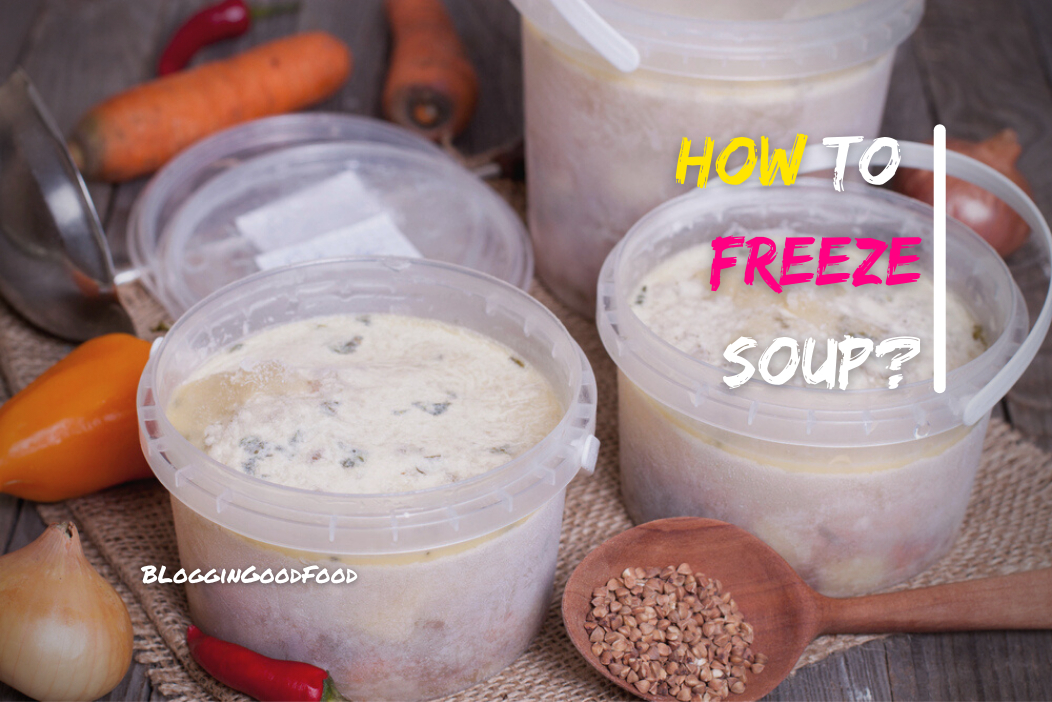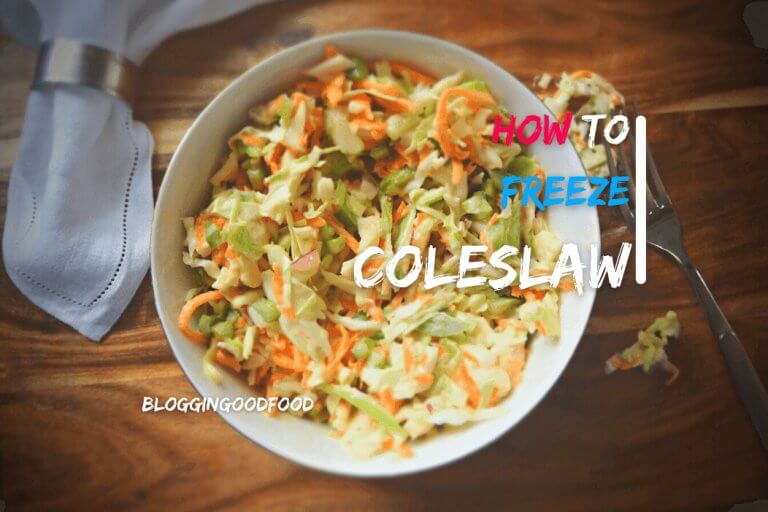Freezing your food is one of the most cost-effective strategies to save money. This includes both cooked and raw foods, allowing you to enjoy the convenience of frozen ingredients at any time of day or night!
Soup is the best dish to prepare ahead of time and store in the freezer. Because most soups can be stored in the freezer for up to three months, it’s a fantastic dish to whip up on a Sunday afternoon and have on hand for many days or even weeks afterward.
On a chilly winter day, there’s nothing better than a hearty bowl of home-cooked soup. However, there are situations when you may find yourself with more soup than you can consume before it goes bad. That’s when the ability to freeze comes in useful! You may use the following instructions to properly freeze soup so that you can enjoy it later on.
Table of Contents
Can You Freeze Soup?
Making soup in advance and freezing it is a terrific way to save money while still eating healthy. Per the Federal Food Safety Information, you may freeze it for anywhere from two to three months if the meal was correctly made and then defrosted before reheating again, which is our regular procedure at home.
What Is the Most Effective Method of Freezing Soup?
The process of learning how to freeze soup is straightforward. Read on for some of our finest advice.

Step 1: Choose a Portion Size
Freezing soup in two-person quantities not only makes the soup freeze faster, but it is also an excellent strategy for a make-ahead lunch or supper for families with lower numbers of people to eat. Before you freeze, think about what will work best for you.
Step 2: Selecting the Appropriate Soup Container
Make use of the round, disposable freezer-safe containers for best results. Whenever you’re ready to eat, run cold water around the outside of the container to release the contents. After removing it from the Instant Pot, the soup will easily transfer to a soup pot or Instant Pot for convenient warming.
Step 3: Let it Cool
Don’t let all of your hard work go to waste because you’ve been boiling that delicious slow cooker soup for hours. Always allow your soup to cool to room temperature before transferring it to a freezer-safe container. After that, place it in the refrigerator to cool down (to a temperature somewhere below 40°) before freezing.
Putting hot soup into the freezer may appear to be a hassle, but doing so will result in huge ice crystals and an uneven freezing process. In addition, cooling soup helps keep the contents of your freezer safe. No one wants the heat from the hot soup to chill out the rest of the food on the table.
Step 4: Avoid Freezer Burn at All Costs
While food that has been frozen and burnt is safe to consume, it may not taste very delicious. Fortunately, freezer burn may be easily avoided! Because the ice crystals that cause freezer burn are formed due to exposure to air, the first step in preserving your food from freezer burn is to keep the air out of the freezer.
This is more difficult when freezing soup because liquid increases when frozen. It’s critical not to overload or underfill the container when filling it. When keeping soup, provide approximately a half-inch of headspace in the container.
To avoid freezer burn, wrap the surface of the soup with plastic wrap, smoothing it down so that it comes into direct touch with the surface of food, and then seal it with the container’s top.
Step 5: Label the Container
Before putting the soup in the freezer, write the name of the soup, the date, and the directions for reheating on the exterior of the freezer jar. This will assist you with remembering what the dish is, how long it will keep, and whether or not there are any further procedures to complete the recipe.
What Should You Avoid Freezing While Making Soups and Stews?
- It is best not to freeze soups and stews that contain cooked grains such as pasta and rice. When thawed, they will tend to turn mushy. Instead, keep them separate and prepare fresh rice or pasta to offer as a side dish.
- When dishes containing dairy are warmed, they tend to split apart. If you want the greatest results, wait until the dish has been warmed before adding any dairy. If your soup already has split, you may smooth it out by blending it in a blender.
- When recipes thickened with cornstarch are defrosted, they will become fluid again. To thicken your food again, add the additional cornstarch slurry and bring it back to a boil.
- Egg drop soups are notoriously difficult to store in the freezer. The egg might become rubbery, resulting in chewy threads rather than smooth strands when you cook it. Prepare your soup up to the point when you add the egg, then freeze it. Once the egg has been defrosted, add it to the mixture.
- It is not recommended to freeze fresh vegetables and herbs since they will get mushy when thawed. Wait till after you’ve warmed your food before adding them.
What Is the Best Way to Freeze Soup in Individual Servings?

Knowing how to store soup in different amounts properly will make all the difference when it comes to the quality of your reheated dishes.
If you don’t want to put the entire quantity into a single container, divide it into tiny freezer containers with one serving each, leaving approximately an inch of space between the soup and the top of the container. There are various reasons why soup should be stored in individual serving sizes.
The smaller the amount, the more effectively the soup will chill, freeze, and reheat when prepared in advance. As a result of the portion’s ability to cool and freeze more evenly, you’ll discover that smaller portions retain their flavor and consistency far better than larger quantities.
Keeping numerous portions in a single container causes the center to take longer to freeze, allowing ice crystals to develop and distort the flavor and texture of the dessert.
Some soups contain components that can expand when subjected to high heat or cold. When keeping soup in large quantities, it is more difficult to predict how much expansion will occur; nevertheless, when storing soup in tiny portions, an inch of extra room within the container is required.
This is essential for understanding how to store soup in individual amounts: always allow for expansion in individual portions.
How Long Can Soup Be Stored in the Fridge Before It Must Be Frozen?
Possibly you believed you’d be able to consume all of that soup before it went bad. Perhaps you’ve been preoccupied with other matters and have forgotten to put it in the freezer. In any case, it’s critical to consider the components before allowing the soup to remain in the refrigerator for an extended period.
Any meat will most certainly go bad within three days, if not four days at the most. So, whether your soup involves chicken, beef, or any other form of meat, you must freeze the entire batch within three days of completing the soup preparation process. If it’s a vegetable soup, you might be able to get away with waiting a day or two longer, but why take the chance?
We recommend that you freeze your soup the same day you prepare it. Anything that isn’t going to be consumed right away should be stored in the plastic jars and placed in the freezer as soon as possible.
If you always put your soup in the freezer on the same day you prepare it, you will reduce your chances of getting food poisoning. According to the Federal Food Safety Information, it should be frozen within three to four days of preparation.
Best Soups to Freeze:

- Simple Beef Stew
- Creamy Chicken Noodle
- Quick Chicken Tortellini Soup
- Easy Chicken Parm Soup
- Chicken Carcass Soup
- Tomato Soup
- Tomato Tortellini Soup
The Best Containers for Freezing Soup: What Are the Best Options?
To properly store soup in the freezer, using a container built specifically for freezer storage is critical. The essential feature to remember is using a container made for freezer storage, whether you use bags or containers. Using any other form of container will result in the container shattering due to the freezing temperatures.
There is a significant difference between standard bags and containers and freezer bags and containers, for example. Don’t take the chance of breaking one of your favorite containers or discovering frost-bitten soup because of fractures in the barrier.
Disposable plastic containers designed for use in freezing conditions can be found alongside those designed for use in moderate temperatures.
Choose Tupperware or other reusable containers designed to be frozen instead of disposable plastic containers. When you leave enough expansion room between the glass containers, like mason jars, they may be used in the freezer.
What Is the Best Way to Thaw Soup?

To thaw the jars or zip lock bags, place them in the refrigerator for up to 2 days or longer based on the condition of the container. Reheat completely in the microwave or on the stove, if necessary, with a dash of water to thin down the sauce.
Frequently Asked Questions:
In the freezer, how long does homemade soup keep its freshness?
Soups will keep for approximately three months in the freezer at their optimum quality, while certain vegetable-based soups could be safely stored for up to six months or more.
What is the shelf life of defrosted soup?
In most cases, if you allow your frozen soup to defrost in the refrigerator for the necessary period (approximately 24 hours), it will keep for three to four days in the fridge.
How can you tell if frozen soup Is bad?
If your soup is discolored or smells awful, it has likely gone bad, just as it is with other forms of frozen food. It’s possible that you won’t notice a difference when it’s frozen, but you will surely notice a difference after it’s thawed.
Wrapping it Up:
The most effective method of freezing soup is to use freezer-safe containers. Using heavy-duty tape or a vacuum sealer to seal the bags would suffice if you don’t have enough on hand.
Alternatively, you may pour the soup into ice cube trays, which can then be frozen firm and used in recipes that call for individual servings of broth or stock cubes in the future. To defrost frozen soup, let it out on the counter overnight to reach room temperature (8 hours).
Microwaves are not recommended since they tend to overcook food from both sides, resulting in an uneven texture and flavor. That’s all there is to it. As long as you follow the instructions below, you should be able to enjoy the diversity of your favorite soups all year round.







